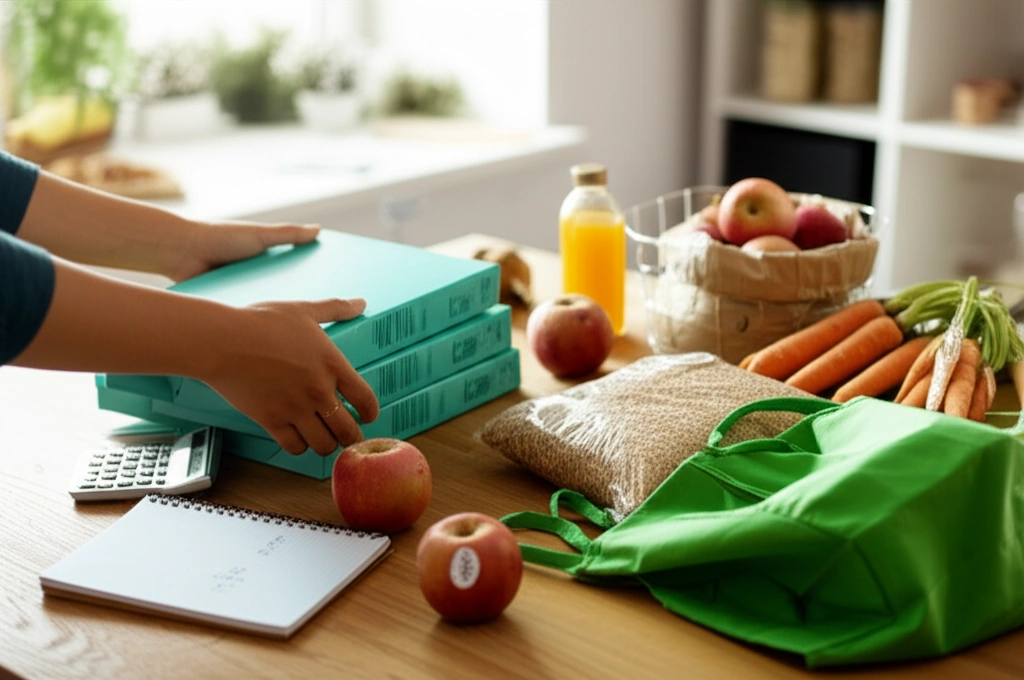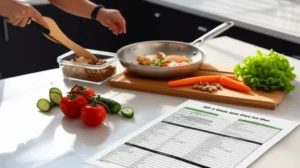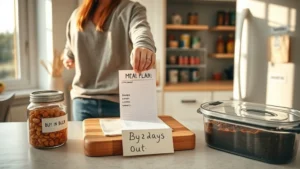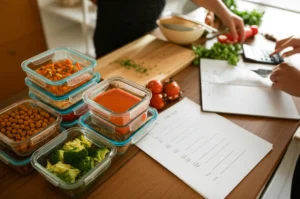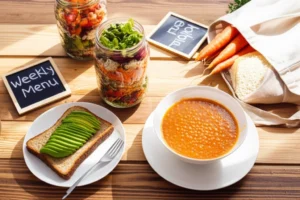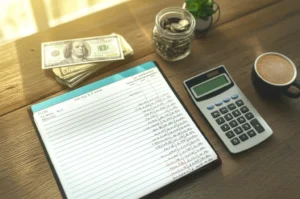Let’s get real for a second: sticking to a grocery budget can feel like playing whack-a-mole with your willpower. You walk in for milk and eggs, and walk out with artisanal cheese, a “just in case” chocolate bar, and maybe some kitchen gadget you’ll use once. Sound familiar? You’re not alone. Food shopping is where so many good financial intentions go to die—with the possible exception of personal care products.
But what if I told you it doesn’t have to feel like a daily battle? That you can actually enjoy grocery shopping, fill your cart with foods you love, and still walk out with enough money left for next week’s haul? It’s not magic—it’s a matter of a few straightforward habits, a sprinkle of planning, and a whole lot of self-kindness. Because, let’s be honest, life’s too short for bland beans and regret.
So, let’s chat about how to stay on budget with groceries in a way that feels human—no punishing rules, no guilt trips, just friendly advice from someone who’s been there (and still wants those chocolate bars, too).
Set Your Grocery Rules
Before you even think about hitting the store, let’s set some ground rules. Think of this like playing a game: you need to know the boundaries to play well.
How Much Should You Actually Spend on Groceries?
Numbers, shmumbers, right? But having a ballpark grocery budget is the first step to avoiding sticker shock at checkout. For most households, groceries are one of the biggest—yet most flexible—monthly expenses. Unlike rent, utilities, or Netflix, you have a lot of control here.
So, where to start? Many experts suggest allocating 10–15% of your total monthly income to groceries. If you’re making $3,000 a month, that’s $300–$450 for food. But, if that number feels totally out of reach for you, don’t panic. Families on tight budgets get creative (think: using sales, meal planning, and pantry staples). There’s no one-size-fits-all here—your personal situation matters, and that’s okay.
Want a shortcut? Try this: track your grocery spending for a month. No judgment, just observation. Once you know your current baseline, you can adjust up or down as needed. If you’re new to budgeting, you might want to check out our guide on how to make a monthly budget for a stress-free way to get started.
Remember, this number isn’t set in stone. Inflation happens, babies happen, life happens. The key is to stay flexible and adjust your budget as life changes. And you know what? That’s totally normal.
Pick Your Budgeting Tool—Cash, Card, or App?
Some people swear by cash. There’s something about physically handing over bills that makes spending feel more real. Others prefer debit cards for the convenience (and points, if your card has them). Apps like Mint, YNAB, or even your bank’s built-in tracker can help you keep tabs in real time.
Here’s the deal: all of these work, as long as you stick to your limit. Using cash can be especially effective if you tend to overspend—when the envelope’s empty, you’re done. If you’re neurodivergent or have ADHD, using visual reminders and digital alerts can be a huge help (more on that later).
There’s no “right” way to budget. It’s about what feels sustainable and honest for you. The goal is progress, not perfection.
Meal Planning Made Easy (No, Really)
Okay, so now you know roughly how much you want to spend. Now let’s talk about how to not blow it all on random snacks and that fancy mustard no one will eat.
Start With a Plan, Not a Panic
Meal planning doesn’t have to mean spending hours scouring Pinterest for recipes with obscure ingredients. Think of it as a friendly map for your week—no need to color-code it unless you want to.
Every weekend (or whatever day works for you), sit down with a cup of coffee and jot down a few dinners you’d actually enjoy eating. Maybe that’s four nights of meals and three “flex” nights (leftovers, freezer meals, or even breakfast-for-dinner). No shame in simple meals—sometimes toast and soup are all you need.
Check your pantry, fridge, and freezer. What’s already there? Can you make a meal out of what you have? This step alone can save you a ton of money—and reduce food waste, too.
Next, build your shopping list from what’s missing. No, you don’t need to buy everything in the recipe section of the cookbook. Focus on the essentials, with a little room for joy (because yes, that chocolate bar is an essential, sometimes).
Shop the Sales, But Don’t Be a Sales Addict
Sales are great—until you end up with six cans of tuna and a craving for literally anything else. Look at the store flyers (or use an app like Flipp or Reebee) and see what’s on offer. Build your menu around those deals, especially for proteins and produce.
But here’s a gentle reminder: just because it’s on sale doesn’t mean you need it. Stick to what you’ll actually eat. The best sale is the one you don’t know about because you didn’t go down that aisle.
Coupons, loyalty programs, and cashback apps can also help, but again, only use what makes sense for your habits. If you forget to scan the app, don’t beat yourself up. Progress, not perfection.
At the Store: Smart Choices, No Stress
You’ve got your budget, your list, and maybe even a plan. Now comes the fun part: actually shopping. Here’s where habits make or break your budget.
Stick to the List (Mostly)
This is the golden rule, but let’s be honest—it’s hard. We’ve all walked in for milk and walked out with a pizza and a cactus (just me?). The more you can stick to your list, the more you’ll save. Impulse buys add up fast, especially if you’re shopping hungry.
If you forget something, ask yourself: “Do I need this today, or can it wait?” Sometimes, the answer is yes. Sometimes, it’s no. That’s okay. Flexibility is key.
Brand Loyalty vs. Store Brand Savvy
Brands spend a lot of money to make you think their ketchup is the only ketchup worth buying. Spoiler: it’s not. Store brands (President’s Choice, Great Value, Kirkland, etc.) are often just as good—and a lot cheaper. Try a few and see what you like. The savings can be surprising.
Look high and low on the shelves. The most expensive items are often at eye level, while the cheaper ones are up or down. It’s like a grocery store treasure hunt.
Fresh, Frozen, or Canned?
There’s no shame in frozen veggies or canned beans. In fact, they’re often cheaper, last longer, and can be just as nutritious as fresh. If you’re on a tight budget, these are your friends. Mix and match based on what’s on sale and what you like.
Meat can be pricey, but buying whole chickens or bulk packs, then freezing portions, is a smart way to save. And don’t overlook eggs, tofu, or lentils for protein—they’re budget-friendly and versatile.
Saving Time = Saving Money
Let’s talk about how to make your food—and your budget—go further. Because who has time to cook every night?
Batch Cooking and Meal Prep
Cooking in big batches is the ultimate time and money saver. Make a giant pot of soup, chili, or pasta sauce and freeze portions for future you. Future you will be very grateful.
Meal prepping doesn’t have to be Instagram-perfect. Even just chopping veggies or cooking a big batch of rice can save you time and reduce last-minute takeout orders (which, let’s be honest, can wreck a budget fast).
Use Leftovers Creatively
Leftovers don’t have to be boring. That roast chicken can become tacos, soup, or fried rice tomorrow. Get creative, and you’ll stretch your food—and your dollars—further.
Track Your Waste
Food waste is money waste. Every week, take a quick look at what’s gone bad. Did you buy too much lettuce? Forget about those bananas? Adjust your shopping habits as you go. A little observation goes a long way.
Special Situations: Budgeting for Couples, ADHD, and Low Income
Budgeting isn’t one-size-fits-all. Here’s how to make it work for your unique situation.
How to Stick to a Budget as a Couple
Money can be a touchy subject, but it doesn’t have to be. If you’re budgeting with a partner, try setting shared goals and rules. Maybe you each get a little “fun money” for treats, or you take turns planning meals. Check in weekly—over coffee, not during an argument—and celebrate small wins.
Remember, it’s not about control, it’s about teamwork. You’re in this together.
How to Stick to a Budget With ADHD
If you have ADHD, traditional budgeting can feel overwhelming. That’s okay. Try visual lists (stickies, whiteboards, apps with notifications), timers, or even ordering groceries online to avoid impulse buys. For more tailored tips, check out our guide on how to stick to a budget with adhd.
Be kind to yourself. Progress is progress, no matter how small.
How to Budget Money on Low Income
If money is really tight, focus on calories per dollar: rice, beans, eggs, oatmeal, and frozen veggies are your best friends. Look for community resources like food banks or discount stores. Every dollar counts, and every small win matters. For more ideas, see our guide on how to budget money on low income.
Quick Wins and Little Hacks
Here are some easy ways to save a bit more, without turning your life upside down:
- Compare unit prices—sometimes the bigger package isn’t cheaper.
- Buy whole instead of pre-cut—those baby carrots aren’t actually babies, and you pay extra for the convenience.
- Use cashback apps or loyalty cards if you remember. If not, no stress.
- Make snacks at home. Granola bars are easy and much cheaper than store-bought.
- Shop less often. Fewer trips mean fewer temptations.
- Plan a “cheat” meal. Let yourself enjoy a treat now and then—it’s good for the soul, and actually helps you stick to your budget long-term.
Balance and Nutrition
Saving money is great, but your health matters, too. If your budget is super tight, focus on nutrient-dense basics (like eggs, beans, and frozen veggies) and add fresh produce when you can. Don’t feel guilty about the occasional splurge—balance is what keeps you going.
If you’re living on a very low income, remember: support is out there. Food banks, community kitchens, and government programs exist to help. You deserve to eat well, no matter your budget.
Tools and Trackers to Try
Sometimes, a little structure helps. Here are a few ideas:
- A simple spreadsheet or notebook to track your spending.
- A meal planning template (stick it on the fridge for inspiration).
- A food waste tracker—just note what goes bad each week, and adjust as you go.
Conclusion: You’ve Got This
Staying on budget with groceries isn’t about deprivation or complicated math. It’s about small habits, a little planning, and a lot of self-kindness. Start where you are. Celebrate your progress, no matter how small. And remember, you’re not alone in this—so many of us are figuring it out as we go.
If you’re just starting out, pick one or two tips from this list and give them a try. If you’re already a budgeting pro, maybe there’s a new idea here to keep things fresh. Whatever your situation, remember: progress, not perfection. Every step counts.
If you have questions, or want to share your own tips, I’d love to hear them. Let’s keep this conversation going—because budgeting is better when we do it together.

